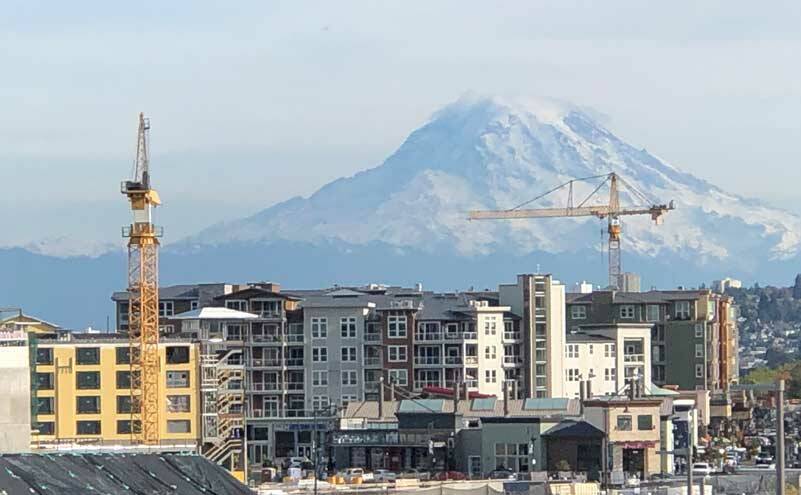By Morf Morford, Tacoma Daily Index
Housing as an investment vehicle
Some of us knew this would happen.
When housing prices collapsed in 2008-09, hedge funds, banks, and even many individuals bought foreclosed properties and began renting them out at jacked-up rates.
In the first three months of the year, a higher percentage of single-family homes were sold to investors than at any other time in U.S. history.
The pioneers of this strategy was Wall Street’s private equity industry, which established corporate landlord companies after the housing bubble crash of 2008.
Floods of investment and pension funds flowed into the housing market – which led to the only result possible – rapid, if not rabid, growth in prices.
It would be difficult to even imagine a more destructive economic force aimed squarely at the American middle class than the private equity industry – and its impact on home ownership, homelessness, typical debt level, and confidence in the future.
Home ownership is the lodestone of the American Dream.
Nothing is more foundational than housing – to family, to generational wealth and to a stable nationwide economy.
Shifting housing from shelter to investment vehicle has made housing just another commodity vulnerable to market swings and financial strategies that have little to nothing to do with shelter.
Underwater?
Most housing analysts concur that single-family homes are about 15% to 20% overvalued.
That “correction” will not be very pleasant to anyone who bought a home at the peak.
In terms of sales, nationwide new home sales passed 1 million in August 2020. They hit 696,000 in May 2022, and are expected to drop to 550,000 this fall.
The ongoing fall in sales is driving up the availability of housing relative to the number of buyers, meaning prices are likely to continue to fall sharply.
Single-family existing home prices dropped by almost 2% in June 2022 – following an almost 0.5% fall in May.
There’s more to come
There’s still a long way to fall when it comes to housing prices.
US home prices soared 40% between February 2020 and April 2022. Over those months, central banks slashed interest rates and people moved to more spacious properties as they stayed home (or worked from home) during the pandemic.
To put it mildly, those days are over.
In the summer of 2022, the Federal Reserve and other central banks are now hiking interest rates as they respond to surging inflation. That’s sent bond yields and mortgage rates soaring, squelching demand for mortgages and house purchases both for individuals and institutions.
US mortgage applications tumbled to their lowest level since 2000 as of the middle of July.
And don’t expect the situation to change any time soon. The average 30-year mortgage rate stood at 5.54% last week, according to mortgage agency Freddie Mac. That’s more than double the rate of 2.76% a year ago.
Some expect US home prices to drop 25% from the highest peak to the lowest point.
This is far from the sub-prime fiasco of 2008-09, but far too many homeowners have overextended their housing budgets.
A drop in equity will hit many of us as individuals or investors, how painful it will be is still unknowable.
Historically high valuations alongside massive debt will never be a promising combination.
This spring one survey showed that about 45% of home sellers said they believed the housing market was headed for a crash in 2022.
It won’t be a replay of 2008-09.
House prices are dropping – but not by much.
After years of 20% increases, a drop of 5% – 10% won’t hit us too hard.
Price appreciation, in fact, is expected to moderate from 20% or so to 5% or 6% by the end of the year.
That’s still high, of course. Just not what we have, for better or worse, become accustomed to.
There’s good reason to be skittish
Many of us remember the 2008 housing crash, when we saw home values plummet and many of us – or our neighbors – lost property to foreclosure.
That is unlikely to happen again.
Housing demand remains strong and housing is a solid hedge against inflation.
A market correction is not the same as a crash.
In June, more than 40% of home sellers dropped their asking price in places like Salt Lake City; Boise, Idaho; Sacramento, Calif.; and other West Coast hot markets.
But we all knew this had to happen.
Home buying costs increased $800 every month this year due to higher mortgage rates and home prices.
That’s $200 a week.
Few, if any household budgets can sustain that kind of economic pressure.
Rising interest rates and buyer fatigue from bidding wars have forced the market to stabilize and return closer to normal – or at least more stable.
The housing market has many moving parts – and they will keep moving.
Interest rates, material costs and customer demand influence our costs and our choices.
Where we enter – or leave – the housing market has a powerful impact on how those changes hit us.
There’s no place like home, but how we get there is a different journey every step of the way,






